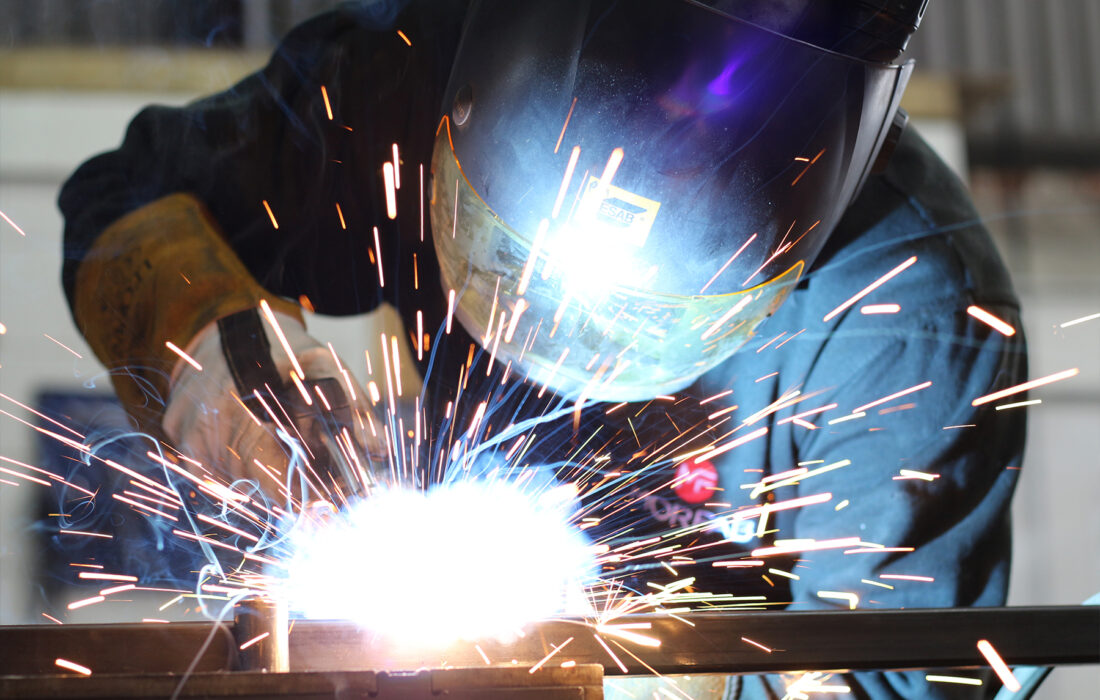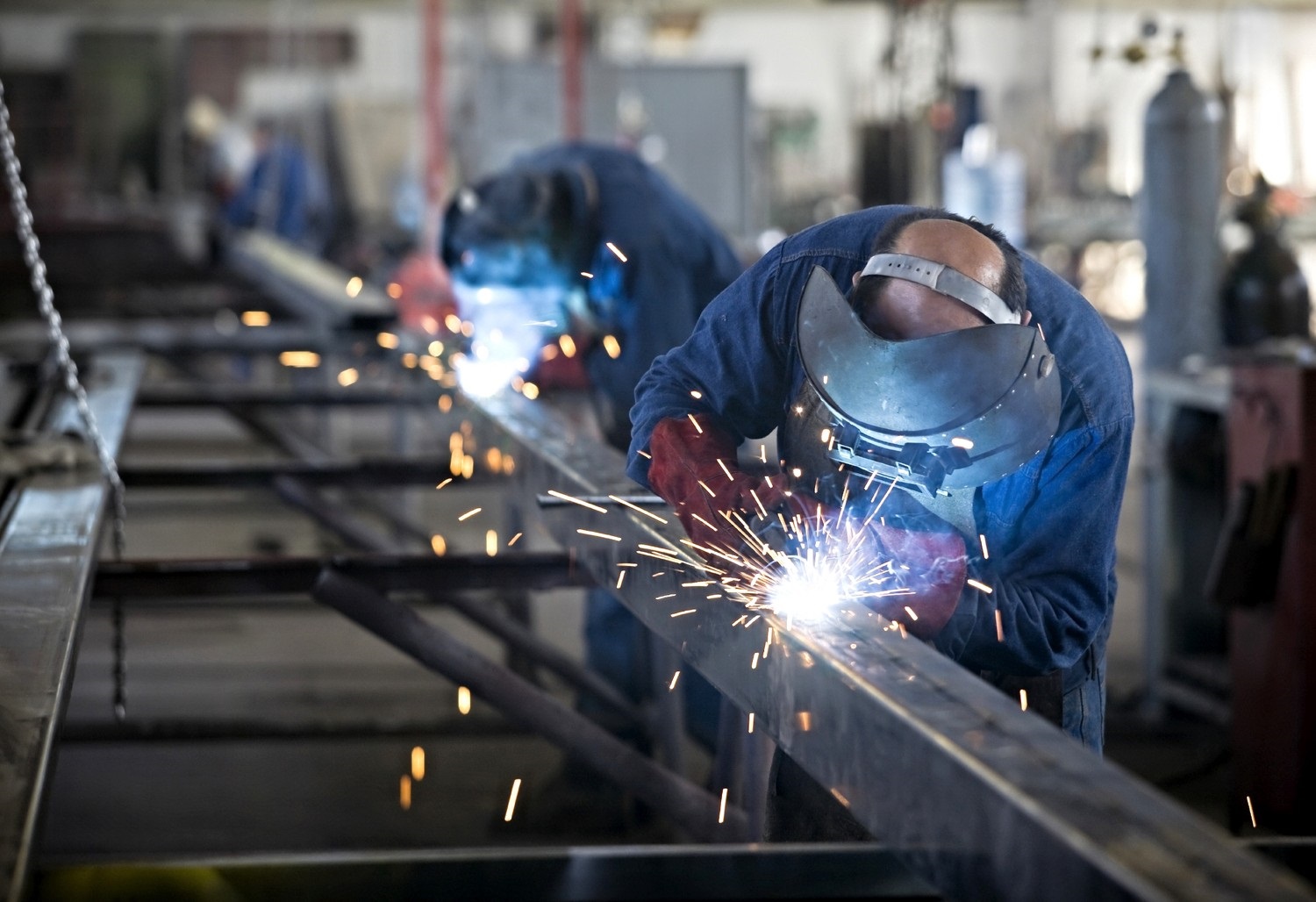Cutting-Edge Metal Fabrication Melbourne: Personalized Solutions for Every Task
Cutting-Edge Metal Fabrication Melbourne: Personalized Solutions for Every Task
Blog Article
Innovative Trends in Steel Fabrication: Enhancing Toughness and Accuracy
In the world of steel fabrication, the quest of toughness and precision has led to a wave of innovative fads that are reshaping the industry. From improvements in welding modern technologies to the integration of robot automation in manufacture procedures, the landscape of steel production is advancing quickly. High-strength alloy growth, coupled with the use of 3D modeling and simulation software, is pressing the boundaries of what is possible in terms of structural stability and accuracy. Furthermore, the growing emphasis on sustainable techniques in steel production is not only driving effectiveness however additionally promoting an extra eco aware approach to manufacture. These fads are not just shaping today but additionally laying the groundwork for the future of steel fabrication, promising more improvements in durability and precision.
Advanced Welding Technologies
In the realm of steel fabrication, the fostering of sophisticated welding innovations has actually considerably transformed the market's strategy to accomplishing premium top quality and accuracy in structural welds. Advanced welding modern technologies, such as laser beam welding and rubbing stir welding, have actually arised as game-changers in the field. By leveraging these advanced welding techniques, steel makers can elevate the durability, strength, and precision of their architectural welds, meeting the increasingly demanding requirements of modern building and construction tasks.
Robot Automation in Fabrication
Embracing robot automation has ended up being a keystone of contemporary steel construction practices, enhancing and streamlining processes effectiveness throughout the sector. Robots are changing the method steel elements are made, offering unmatched accuracy and rate while decreasing human mistake. These automated systems can manage recurring tasks with constant accuracy, leading to greater high quality final product.
One key advantage of robot automation in steel fabrication is the capacity to function all the time without exhaustion, significantly increasing production result. This continual operation lessens downtime and accelerates project timelines, inevitably saving prices for makers. Furthermore, robots can be set to carry out intricate tasks that may be challenging or dangerous for human workers, improving safety in the office.
Additionally, robot automation allows smooth assimilation with other digital innovations, such as computer-aided layout (CAD) software program and Net of Things (IoT) systems (steel fabricators melbourne). This interconnected approach enhances interaction between various phases of construction, optimizing workflows and ensuring real-time tracking and control. As the steel fabrication industry remains to develop, robotic automation stands apart as a transformative pressure driving efficiency and accuracy in making processes

High-Strength Alloy Development
The innovation of high-strength alloy development in steel manufacture is improving the industry's technique to improving product resilience and efficiency. High-strength alloys are crafted to exhibit remarkable mechanical residential or commercial properties, such as boosted tensile stamina, toughness, and deterioration resistance compared to standard steel qualities. By including these innovative alloys into fabrication processes, manufacturers can create elements that stand up to greater stress and anxiety levels and rough atmospheres, bring about even more long lasting and reliable output.
One trick benefit of high-strength alloy development is the capability to decrease product density without endangering structural honesty. This not just leads to lighter-weight components however likewise contributes to set you back financial savings and boosted efficiency in manufacture and assembly processes. The enhanced strength-to-weight proportion of these alloys enables for the layout and construction of structures with higher load-bearing capabilities while reducing total weight.
3D Modeling and Simulation Software
Advancements in steel fabrication procedures have been significantly propelled by the assimilation of innovative 3D modeling and simulation software application tools. These tools allow fabricators to develop comprehensive virtual models of their jobs, enabling them to visualize the last item with precision prior to any kind of physical job starts.

Sustainable Practices in Steel Manufacturing
Integrating lasting methods right into steel production procedures is important for decreasing environmental impact and making sure lasting resource accessibility. One key sustainable technique is the adoption of energy-efficient technologies to minimize greenhouse gas emissions during the steel production procedure. This includes utilizing eco-friendly energy sources, such as solar or wind power, to power steel plants and implementing energy-efficient devices to maximize energy usage.
An additional essential element of lasting steel manufacturing is the responsible sourcing of resources. This includes guaranteeing that the iron ore and other resources utilized in steelmaking are obtained from ecologically Alpha reo friendly and ethical resources. By promoting transparency in the supply chain and adhering to rigorous environmental criteria, steel makers can reduce the negative impacts of resource extraction on regional ecosystems and neighborhoods.

Conclusion
Finally, the cutting-edge fads in steel construction such as sophisticated welding modern technologies, robot automation, high-strength alloy growth, 3D modeling and simulation software program, and lasting techniques are enhancing the toughness and precision of steel items. These innovations are revolutionizing the steel manufacture sector by improving sustainability, top quality, and efficiency. It is clear that the future of steel fabrication hinges on welcoming these cutting-edge technologies to meet the needs of contemporary building and construction and production industries.
In the realm of steel manufacture, the quest of durability and precision has led to a wave of innovative patterns that are reshaping the market.In the realm of steel fabrication, the fostering of cutting-edge welding innovations has considerably reinvented the sector's technique to attaining remarkable quality and accuracy in structural welds. As the steel construction market proceeds to progress, robot automation stands out as a transformative pressure driving performance and precision in making processes.
Furthermore, reusing and reusing steel scrap and waste products play a significant function in improving the sustainability of steel production. steel fixing.In conclusion, the ingenious patterns in steel fabrication such as advanced welding modern technologies, robot automation, high-strength alloy development, 3D modeling and simulation software, and sustainable techniques are improving the resilience and accuracy of steel items
Report this page